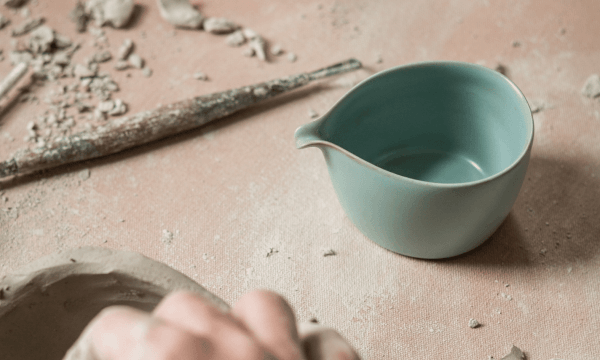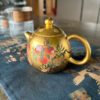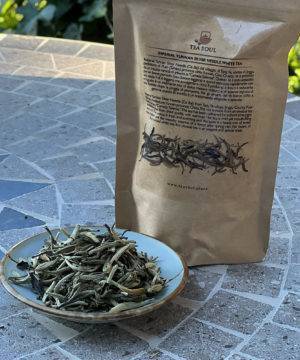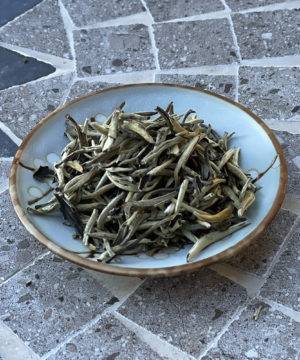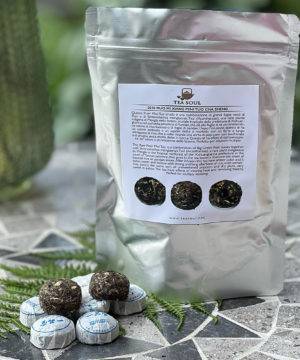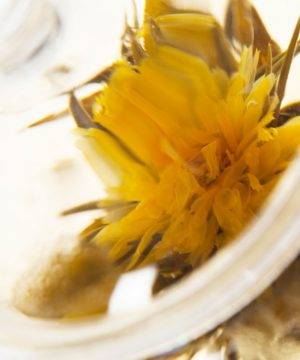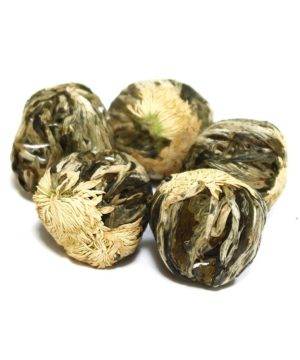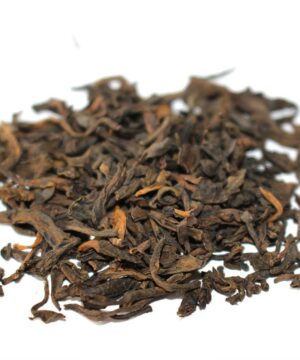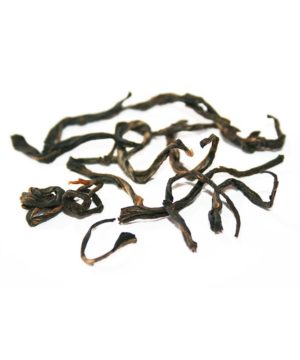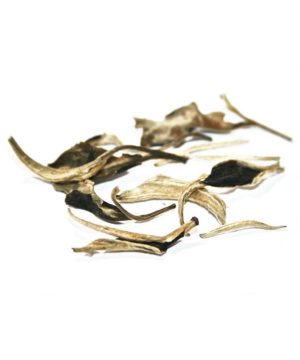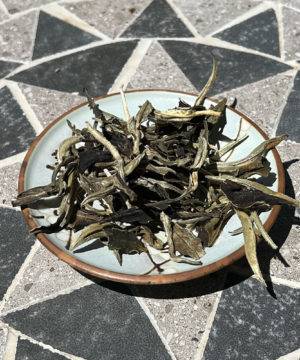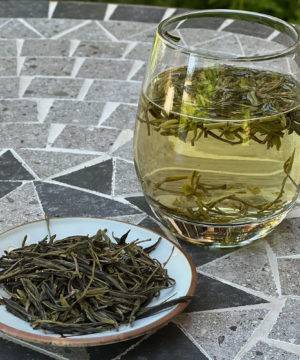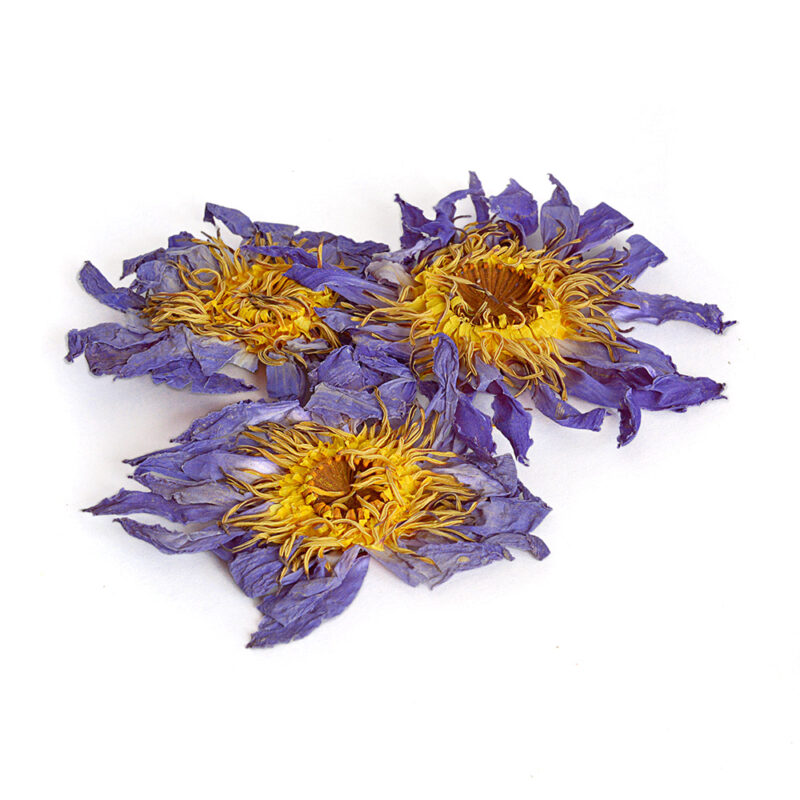

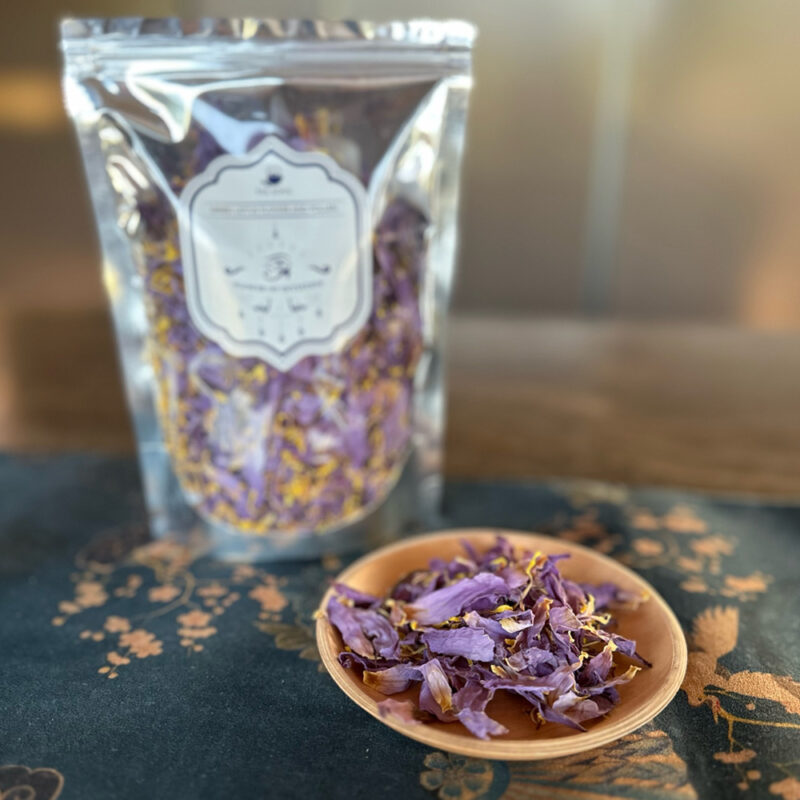

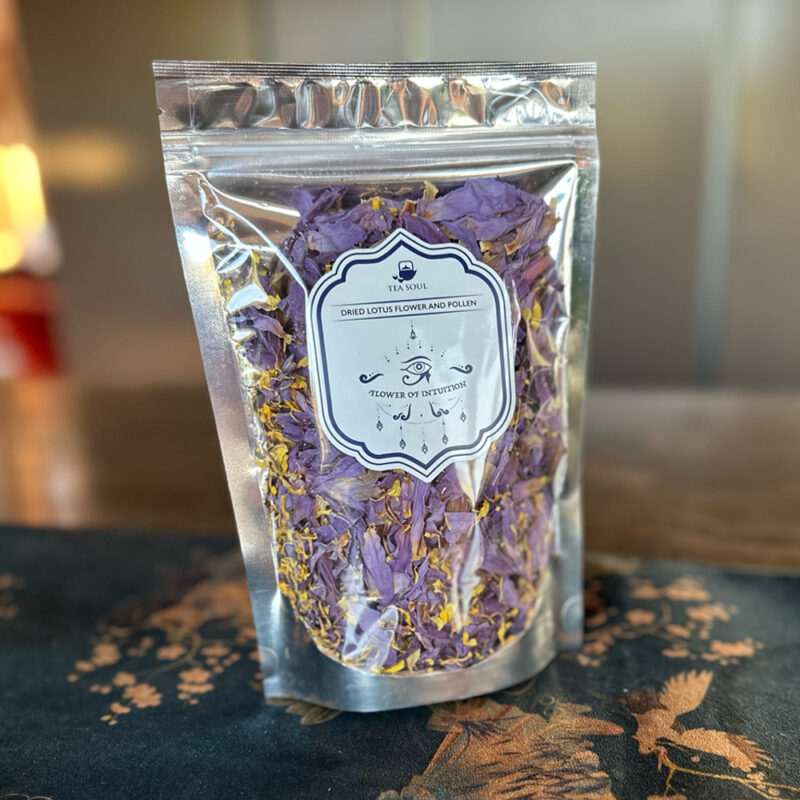

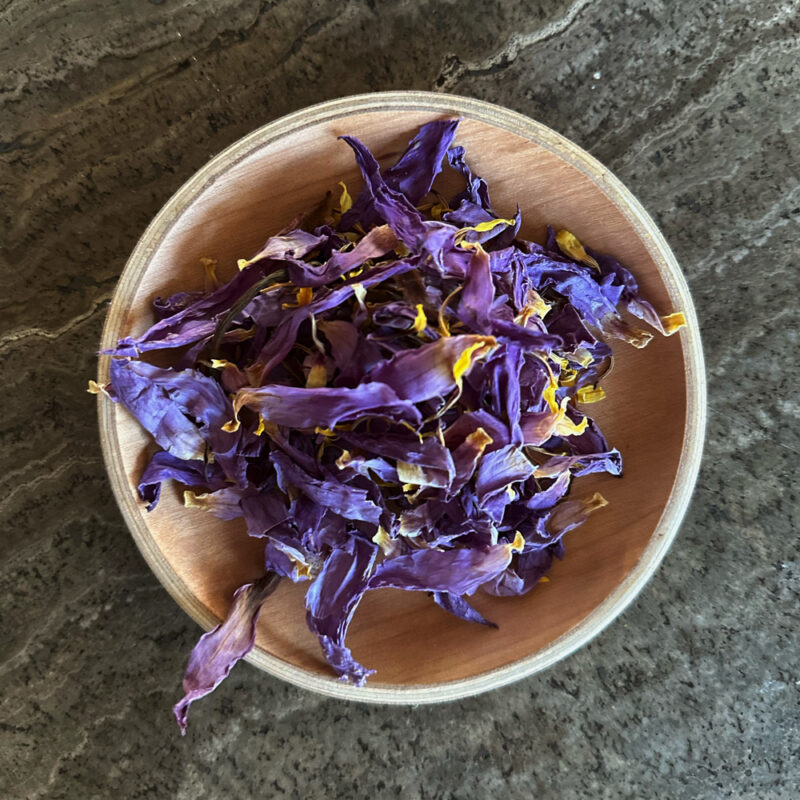

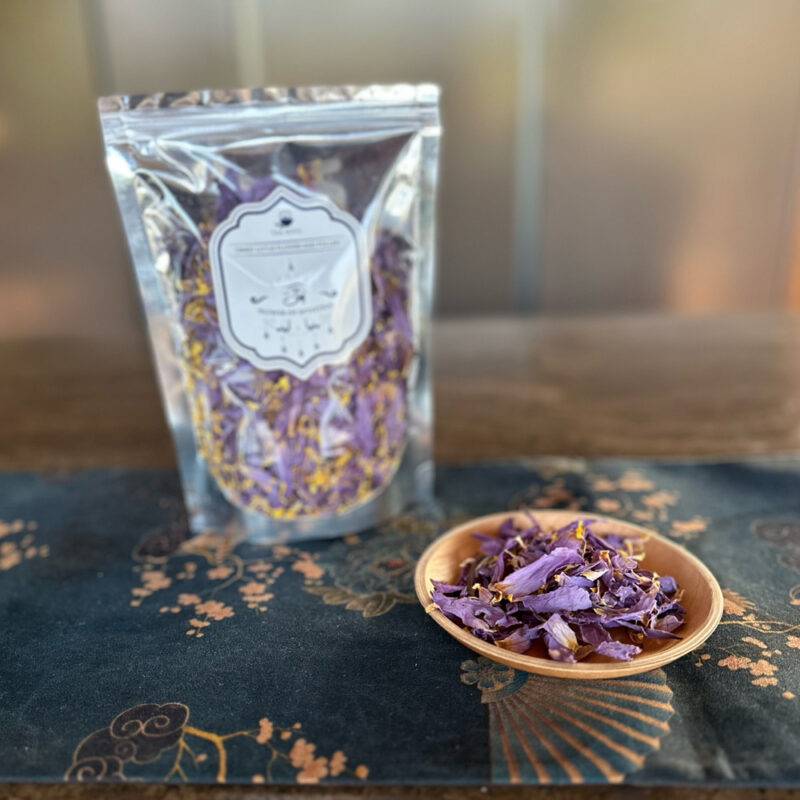

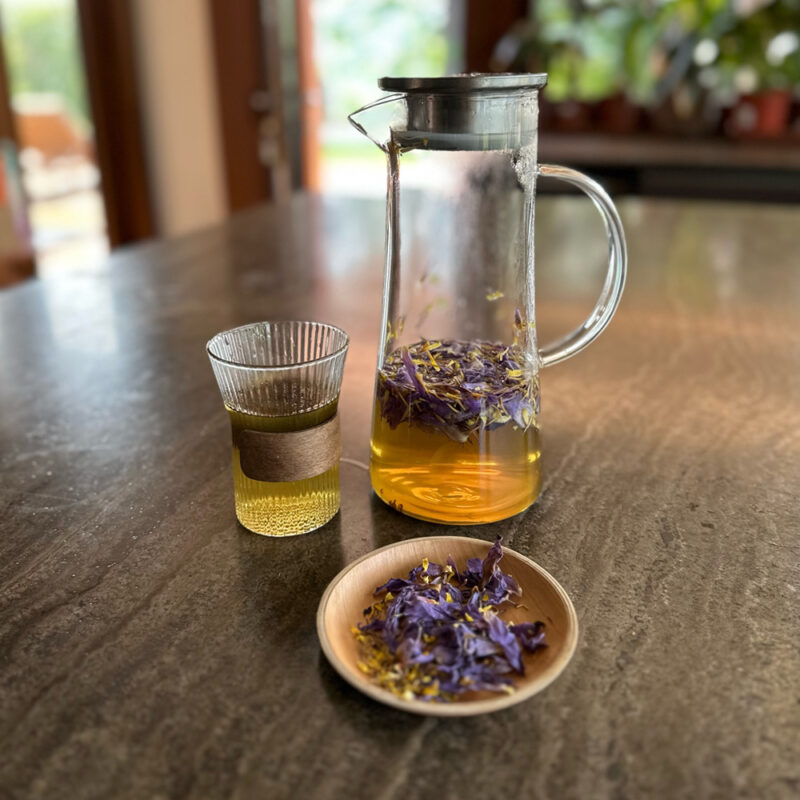

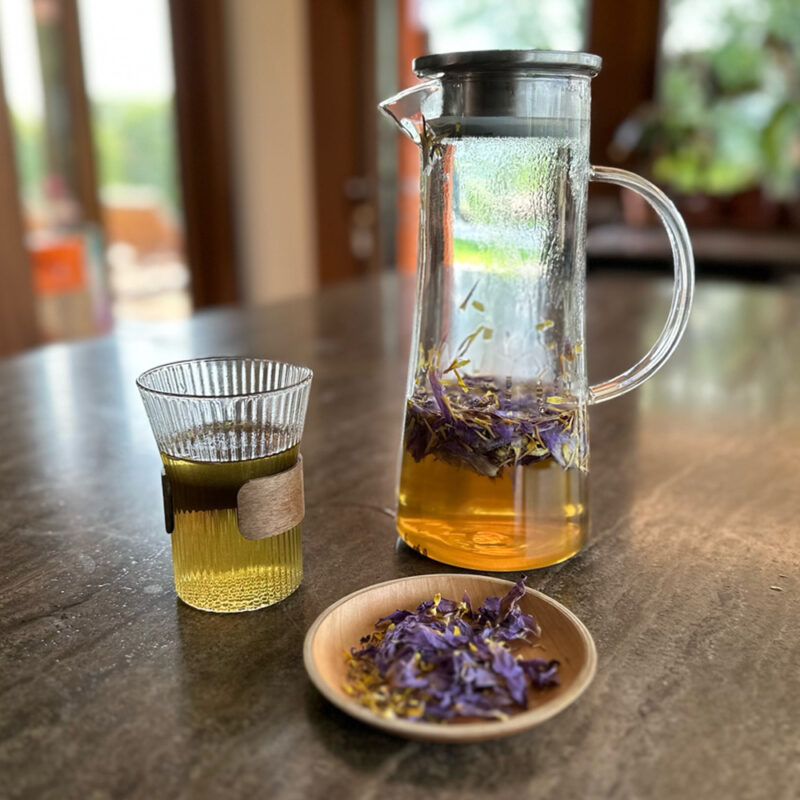

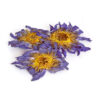

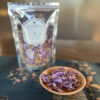

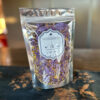

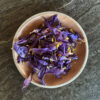

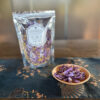

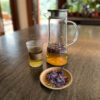

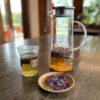

Dried Blue Lotus Flower
14.50€ Taxes included
Dried Blue Lot us Flower(Nymphaea caerulea) has long been a very important flower for the ancient Egyptians and the Mayans, who used it for meditative and religious purposes: the Blue Lotus Flower is indeed able to promote concentration and relaxation.
SKU: fiore-di-loto-blu-essicato
Categories: Tea, Blooming tea, TrovaPrezzi
DON'T MISS DISCOUNTS AND NEWS!
Subscribe to our WhatsApp channel and receive all updates quickly and conveniently!
Subscribe to our WhatsApp channel and receive all updates quickly and conveniently!
The Dried Blue Lotus Flower(Nymphaea caerulea) has long been a very important flower in ancient Egypt and Mayan culture, so much so that it is found in numerous papyri and in wall representations of temples in the Karnak Valley and Luxor. According to several scholars, struck by this parallelism between two cultures so distant geographically, blue lotus flowers were used in both cultures for ritualistic purposes and probably to achieve altered states of consciousness during religious ceremonies. In all likelihood, beyond its symbolic and religious aspect, Blue Lotus was also used by the ancient Egyptians and Mayans as a meditative plant that could promote concentration, relaxation, and lucid dreams.
Benefits of the Blue Lotus
Blue Lotus is rich in vitamin B and L-carotene: in traditional medicine it has been used for thousands of years to stimulate metabolism, to balance sleep, as a natural aphrodisiac and as a calming agent. There are antioxidant components, flavonoids, phenols and two alkaloids to which its main properties can be traced: apomorphine and nuciferin; both have antispasmodic, relaxing, aphrodisiac and antipsychotic properties.
Sight and smell
The whole lotus flower, about the size of the palm of a hand, has large petals arranged in a spiral and slightly folded inward purple, with a paler lilac toward the center that fades to a sharper indigo going outward. Numerous bright yellow stamens stand out in the center of the flower, some petal-shaped and some still closed and stringy in shape, with purple streaks.
Once infused in water, the flower exudes fresh notes of young bamboo and aniseed, as well as a delicate hint of green wood.
In the cup, the liquor is golden yellow with lime green highlights.
Tasting Notes
On the palate, the liqueur reveals fresh, almost menthol-like notes, with sweet hints reminiscent of anise and fennel. Mild vegetal hints of bamboo shoots and a slight underlying bitterness reminiscent of saffron flavors are also discernible. The body is silky and of medium density, with a fresh persistence and anise notes that linger on the tongue.
Infusion method
We recommend preparing this flower with a classic Western-style preparation: 1 gram (or a whole flower) in 400 ml with water at 80°C for an infusion time of 2 minutes, according to personal tastes.
| PACKAGE | 25 g, 3 pieces |
|---|---|
| Other - Origin | Thailand |
| Temperature | 80°C |
| Preparation - TEAPOT | 1 whole flower x 400ml / 2 minutes |
Still no Reviews for this Product
Related products
8.00€ Taxes included
Earn up to 30 points.
This product has multiple variants. The options may be chosen on the product page
10.40€ Taxes included
Earn up to 38 points.
This product has multiple variants. The options may be chosen on the product page
8.00€ Taxes included
Earn up to 30 points.
This product has multiple variants. The options may be chosen on the product page
9.20€ Taxes included
Earn up to 81 points.
This product has multiple variants. The options may be chosen on the product page
Puer tea
6.90€ Taxes included
Earn up to 25 points.
This product has multiple variants. The options may be chosen on the product page
6.90€ Taxes included
Earn up to 25 points.
This product has multiple variants. The options may be chosen on the product page
White tea
11.50€ Taxes included
Earn up to 65 points.
This product has multiple variants. The options may be chosen on the product page
Yellow tea
10.40€ Taxes included
Earn up to 69 points.
This product has multiple variants. The options may be chosen on the product page





